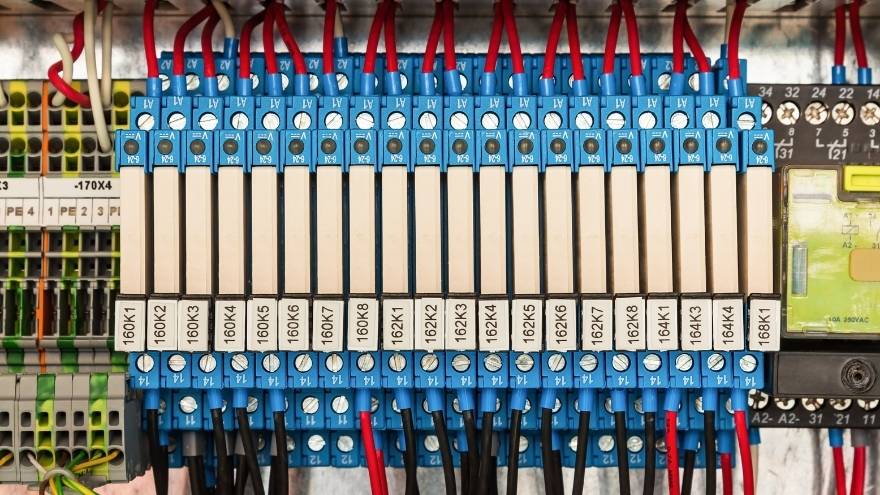A monostable relay is an electrical device that, upon receiving a control signal, activates for a predetermined time, after which it automatically returns to its initial state. It works similarly to a button that, when pressed, activates a function for a specified time and then switches off automatically. Its use covers a wide range of applications, from simple household appliances to advanced industrial systems.

Check the relays at the Onninen wholesaler
In what electrical circuits are monostable relays suitable?
 Monostable relays are a key component in electrical automation and control systems. They are ideal for electrical circuits where short-term, precise switching is required, i.e. where automatic and temporary interruption of current flow is required. Monostable relays are used in various areas, including:
Monostable relays are a key component in electrical automation and control systems. They are ideal for electrical circuits where short-term, precise switching is required, i.e. where automatic and temporary interruption of current flow is required. Monostable relays are used in various areas, including:
- industrial automation - they control devices such as engines, valves and pumps, which enables efficient management of production and energy processes,
- lighting systems - used to temporarily turn lighting on and off, e.g. in stairwells or in external property lighting systems,
- security systems - in alarms and monitoring systems, monostable relays are responsible for temporarily activating signals, which increases their reliability,
- household appliances - in household appliances such as microwave ovens or dryers, they allow for automatic shutdown after a set operating time.
How to choose a monostable relay for the needs of an electrical installation?
 Selecting a monostable relay requires taking into account several key criteria:
Selecting a monostable relay requires taking into account several key criteria:
- Electrical parameters of the circuit - the relay must be compatible with the load and control voltage and current to operate safely and reliably,
- switch-on time - it is worth choosing a relay with an operating time adapted to the application requirements, e.g. short cycles in lighting or precise in industrial automation,
- Relay type - electromagnetic relays are suitable for low switching frequency and higher currents, solid state relays (SSR) will work well in faster cycles without mechanical wear,
- durability and switching frequency — the durability of the relay should be matched to the switching frequency — semiconductor models are more resistant to frequent switching,
- safety and certification - it is worth choosing a relay that meets safety standards and certificates (e.g. CE, UL), especially for industrial applications.
- Attention should also be paid to environmental conditions, installation and size.
What is the difference between a monostable and a bistable relay?
 Monostable and bistable relays differ in their mode of operation after the control signal is disconnected:
Monostable and bistable relays differ in their mode of operation after the control signal is disconnected:
- A monostable relay has one stable state (off). It switches briefly after a pulse, then automatically returns to the output state. It is used where temporary switching is required, e.g. in staircase lighting.
- A bistable relay has two stable states (on and off) and maintains the selected state even after the pulse ends. It is useful where it is necessary to maintain the state without continuous power supply, e.g. in memory systems and remote control.